Structural variant evolution after telomere crisis
- PMID: 33828097
- PMCID: PMC8027843
- DOI: 10.1038/s41467-021-21933-7
Structural variant evolution after telomere crisis
Abstract
Telomere crisis contributes to cancer genome evolution, yet only a subset of cancers display breakage-fusion-bridge (BFB) cycles and chromothripsis, hallmarks of experimental telomere crisis identified in previous studies. We examine the spectrum of structural variants (SVs) instigated by natural telomere crisis. Eight spontaneous post-crisis clones did not show prominent patterns of BFB cycles or chromothripsis. Their crisis-induced genome rearrangements varied from infrequent simple SVs to more frequent and complex SVs. In contrast, BFB cycles and chromothripsis occurred in MRC5 fibroblast clones that escaped telomere crisis after CRISPR-controlled telomerase activation. This system revealed convergent evolutionary lineages altering one allele of chromosome 12p, where a short telomere likely predisposed to fusion. Remarkably, the 12p chromothripsis and BFB events were stabilized by independent fusions to chromosome 21. The data establish that telomere crisis can generate a wide spectrum of SVs implying that a lack of BFB patterns and chromothripsis in cancer genomes does not indicate absence of past telomere crisis.
Conflict of interest statement
T.d.L. is on the SAB of Calico Life Sciences, LLC. The remaining authors declare no competing interests.
Figures
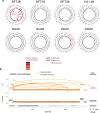
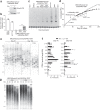
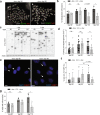

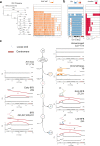
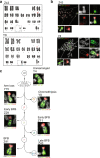
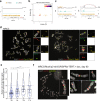
Similar articles
-
APOBEC3-dependent kataegis and TREX1-driven chromothripsis during telomere crisis.Nat Genet. 2020 Sep;52(9):884-890. doi: 10.1038/s41588-020-0667-5. Epub 2020 Jul 27. Nat Genet. 2020. PMID: 32719516 Free PMC article.
-
Chromothripsis and Kataegis Induced by Telomere Crisis.Cell. 2015 Dec 17;163(7):1641-54. doi: 10.1016/j.cell.2015.11.054. Cell. 2015. PMID: 26687355 Free PMC article.
-
Chromothripsis during telomere crisis is independent of NHEJ, and consistent with a replicative origin.Genome Res. 2019 May;29(5):737-749. doi: 10.1101/gr.240705.118. Epub 2019 Mar 14. Genome Res. 2019. PMID: 30872351 Free PMC article.
-
Chromothripsis and telomere crisis: engines of genome instability.Curr Opin Genet Dev. 2020 Feb;60:41-47. doi: 10.1016/j.gde.2020.02.009. Epub 2020 Mar 6. Curr Opin Genet Dev. 2020. PMID: 32151946 Free PMC article. Review.
-
Catastrophic Endgames: Emerging Mechanisms of Telomere-Driven Genomic Instability.Trends Genet. 2020 May;36(5):347-359. doi: 10.1016/j.tig.2020.02.001. Epub 2020 Mar 13. Trends Genet. 2020. PMID: 32294415 Review.
Cited by
-
Flexible Attachment and Detachment of Centromeres and Telomeres to and from Chromosomes.Biomolecules. 2023 Jun 20;13(6):1016. doi: 10.3390/biom13061016. Biomolecules. 2023. PMID: 37371596 Free PMC article. Review.
-
Tracking telomere fusions through crisis reveals conflict between DNA transcription and the DNA damage response.NAR Cancer. 2021 Mar;3(1):zcaa044. doi: 10.1093/narcan/zcaa044. Epub 2021 Jan 6. NAR Cancer. 2021. PMID: 33447828 Free PMC article.
-
Acral Melanoma: A Review of Its Pathogenesis, Progression, and Management.Biomolecules. 2025 Jan 14;15(1):120. doi: 10.3390/biom15010120. Biomolecules. 2025. PMID: 39858514 Free PMC article. Review.
-
ATR blocks telomerase from converting DNA breaks into telomeres.Science. 2024 Feb 16;383(6684):763-770. doi: 10.1126/science.adg3224. Epub 2024 Feb 15. Science. 2024. PMID: 38359122 Free PMC article.
-
Chromothripsis in cancer.Nat Rev Cancer. 2025 Feb;25(2):79-92. doi: 10.1038/s41568-024-00769-5. Epub 2024 Nov 15. Nat Rev Cancer. 2025. PMID: 39548283 Review.
References
-
- The ICGC/TCGA Pan-Cancer Analysis of Whole Genomes Consortium. Pan-cancer analysis of whole genomes. Nature578, 82–93 (2020). - PubMed
Publication types
MeSH terms
Grants and funding
LinkOut - more resources
Full Text Sources
Other Literature Sources
Medical
Research Materials
Miscellaneous

